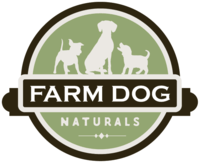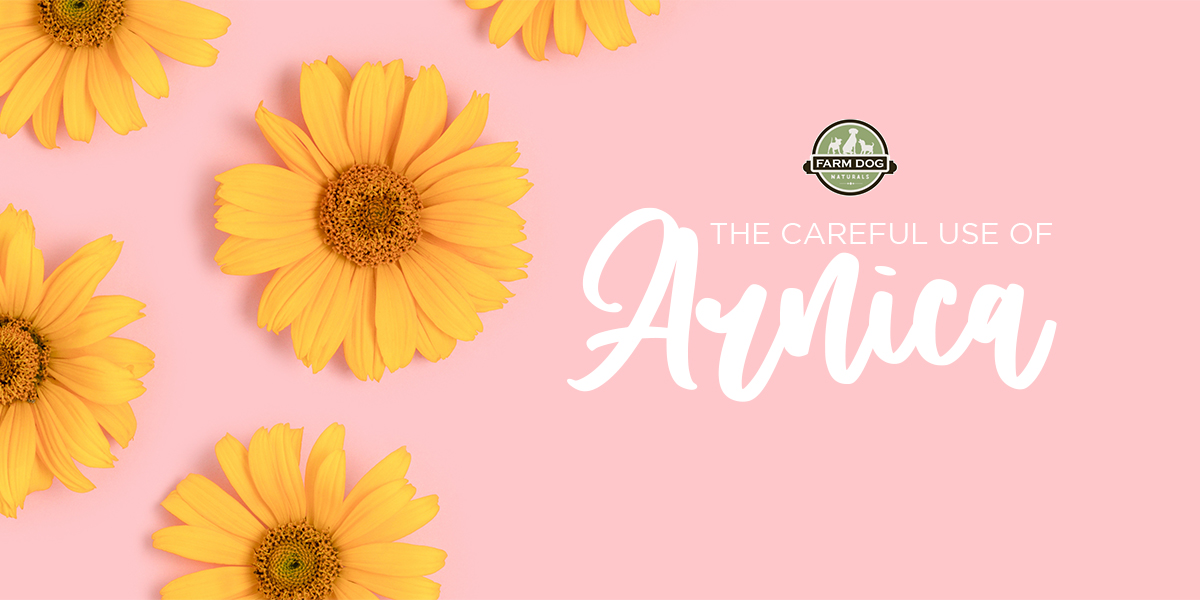Arnica, also known as Leopard’s Bane, is a bright yellow flowering herb that has fine hairs covering each leaf. Smelling of pine, arnica is a stout plant that falls into the category ‘small but mighty.’
Arnica is an adventurer and mountain climber as it grows above 9,000 feet when found in its natural habitat. However, you can plant this perennial in your own garden or container if you are feeling a little adventurous. It takes about two years for arnica to mature and flower, then it gets with the program and blooms yearly. What I love about arnica is its usage as a whole plant medicine maker, especially when it comes to arnica for dogs.
Use of Arnica for Dogs
Arnica helps open up capillaries and increase lymph drainage. This wonderful herb helps move wastes out of the body and circulate blood to affected areas.
Arnica for dogs is used primarily in wound care and for dilation of blood vessels. These properties aid in the care of muscles, especially spasms. I use homeopathic arnica every week when my muscles are feeling achy. Arnica is used in holistic veterinary care for fractures, sprains, and bruising. Working and sporting dogs can really benefit from the external use of Arnica. It is best to use it as soon as you can after working with your dogs or at the onset of an injury or muscle trauma.
Precautions
While it has wonderful benefits when used properly, whole herb arnica can be toxic if ingested so you need to be careful when using it. As an herb or oil, arnica needs to be wrapped and your dog has to be kept from licking the preparation.
Using whole herb medicine, arnica can prove harmful by causing internal bleeding (in large quantities) because it stimulates the dilation and circulation of blood vessels. For this reason, arnica should not be used on open wounds.
Homeopathic arnica, on the other hand, does not present the same challenges. It is completely safe to use. This is because homeopathic remedies are made through a process of dilution, so the final remedy has only minute to almost no traces of the original plant. Still, homeopathic remedies are very effective even though they only contain trace amounts of the medicines they administer.
How to Use Arnica for Dogs
When using arnica externally, you must be present with your dog during the entire treatment so as to keep them from licking the affected area. To apply, use arnica gel or infused oil (not essential oil) to the skin and wrap with gauze or compress. Put a comfy cone on your dog if they are too big for you to easily stop from trying to lick. I know my Rottweiler Igge would definitely have to have worn the cone. Her head was incredibly strong. Keep the compress or gauze on your dog for at least 20-30 minutes or as long as possible. Apply twice per day up to 3 days.
With homeopathic remedies, a few pellets in their cheek or in a cup of water can work wonders. Give the remedy once, watch for an improvement. If you see one, don’t dose again. If you don’t see one in 20-30 minutes, give another dose.
Even though you cannot use arnica in its whole herb form internally, you should not overlook it as an effective medicine for muscle pain and trauma. The external use of arnica has proven itself effective time and again. The homeopathic use of the herb is a safe and effective way to witness its internal healing capabilities for your dog and yourself. With a little care and attention to the above precautions, you will learn to love using this sunny and bright yellow wonder.

